Dec
3
2011
1 Peter 2:4-10 | Sermon Notes
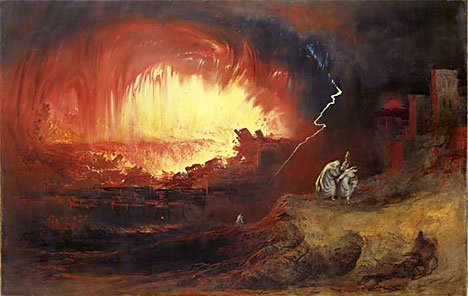
The Stoning of Israel
I think it’s worth looking at the literary structure of this passage. Here’s a revised version of the sheet I handed out after the sermon.
As I’ve written before, modern readers (and commentators) only look at the content of the text, but the authors of Scripture also communicate to us through where they place that content within that text, i.e. how it is arranged.
Continue reading
1 comment | tags: Baptism, Covenant curse, Covenant Theology, Literary Structure, Lot, Moses, Peter, Ruth, Systematic typology, Tabernacle, The Law, Typology | posted in Bible Matrix, Biblical Theology
Oct
14
2010
The Killing Field
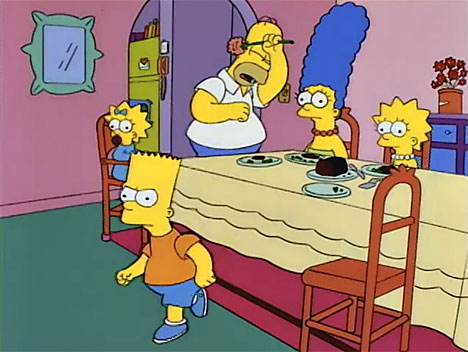
“…that on you may come all the righteous blood shed on the Land, from the blood of righteous Abel to the blood of Zechariah, son of Berechiah, whom you murdered between the temple and the altar.” Matthew 23:35
“from the blood of Abel to the blood of Zechariah who perished between the altar and the temple. Yes, I say to you, it shall be required of this generation.” Luke 11:51
The Hebrew word for “land” is feminine. [1] The fruitful Bride is pictured in the fruitful field. Both are to be cultivated and cared for under God by Covenant.
When the priesthood was faithful, God promised to make the people, animals and Land fruitful: the Covenant “to,” the input of the Spirit as Head, as Covenant Word made flesh. Deuteronomy 28 gives a long list of ways in which God would make her abundant. Continue reading
1 comment | tags: Abel, Atonement, Cain, Covenant curse, Covenant Theology, Culture, Deuteronomy, Genesis, James Jordan, Judges, Leviticus, Noah, Peter Leithart, Ruth | posted in Biblical Theology, Quotes
Jul
16
2010
or The Spirit Bids Geldings Be Fruitful
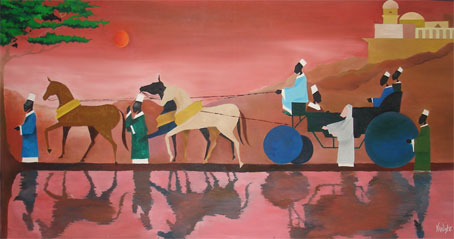
It’s cat-among-the pigeons time again.
Identifying the Bible Matrix in Acts reveals in quite a number of places that the author, Luke, has a sense of humour. Or the Holy Spirit does. In Acts 8, at Ascension (Firstruits), the Ethiopian eunuch asks Philip to hop up into his chariot. [1]
Philip opens the Law for him at Pentecost, the man is “resurrected” at Trumpets, baptized at Atonement (the Laver), and at Tabernacles we have both a Jew and Gentile whose witness flows out into the nations.
Continue reading
4 comments | tags: Acts, Baptism, Covenant curse, Covenant Theology, Gnosticism, Mordecai, Noah, Postmillennialism, Ruth | posted in Bible Matrix, Biblical Theology
Dec
11
2009
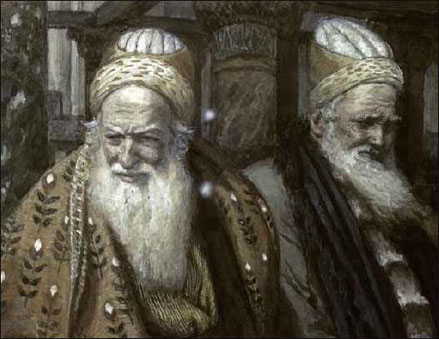
“Paul knew his kinsmen. This is a group of people on whom this tactic would work.”
Doug Wilson has been preaching through Romans (subscribe to his podcast now!) and recently commented on his blog about Romans 11, and the relationship between Christians and Jews today.[1] I’ll have to listen to his sermon to figure out whether Doug sees this as interpretation (“all Israel” is yet to be saved), or application.
I made some comments and a gent called Lemuel replied, and I made some more. It brings out the significance of the phrase “the sons of God.”
Continue reading
1 comment | tags: AD70, Circumcision, Compromise, Doug Wilson, Galatians, Gary DeMar, Judaisers, Noah, Romans, Ruth | posted in Biblical Theology, The Last Days
Nov
12
2009
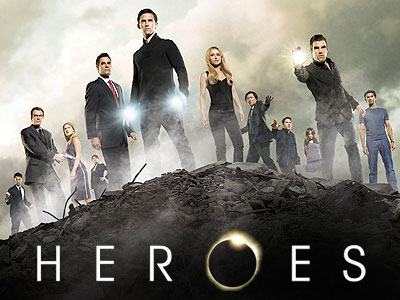 As the end of the ‘Creation week’ (slavery to Sabbath) that created a new nation, there were twelve judges. Twelve is the ‘offspring’ number, being the three of heaven married, multiplied with, the four of the Land.[1] However, we know these brave ‘champions’ were not a sabbath society but a rescue operation after the failure of the Levites.
As the end of the ‘Creation week’ (slavery to Sabbath) that created a new nation, there were twelve judges. Twelve is the ‘offspring’ number, being the three of heaven married, multiplied with, the four of the Land.[1] However, we know these brave ‘champions’ were not a sabbath society but a rescue operation after the failure of the Levites.
Continue reading
Comments Off | tags: Bible Chronology, Bible history, Bible Matrix, Boaz, Judges, Obed, Ruth, Samson, Samuel | posted in Biblical Theology
Sep
3
2009
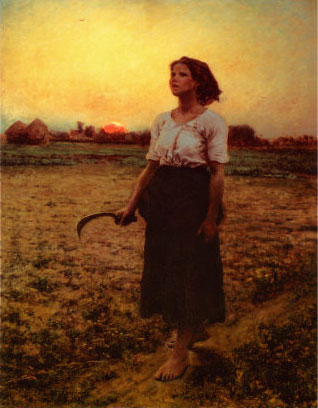
This beautiful gem from Paul Huxley (reposted here with his permission):
A man finds some treasure in a field, he covers it up, joyfully buys the field and gets the treasure. Does that sound familiar? That’s right. It’s the plot of the book Ruth.
Continue reading
Comments Off | tags: Bible Matrix, Boaz, Matthew, Parables, Paul Huxley, Ruth, Systematic typology, Totus Christus, Trinity, Typology | posted in Biblical Theology
May
30
2009
A House of Bread
There are two kinds of whiteness in the Bible, and an understanding of this explains a great deal. There is the whiteness of covering and the whiteness of uncovering. And, as mentioned, the Bible makes a great deal out of the concept of covering.
Bone Collector
Purge me with hyssop, and I shall be clean; Wash me, and I shall be whiter than snow.
Touching a corpse made an Israelite unclean. The remains of those slain in battle were marked with lime for two reasons: so that they could be avoided by the clean, and so they could be gathered up and burned to lime by the bone collectors. Jesus said that the righteousness of the Pharisees was like a whitewashed sepulchre. Not only were they full of the ceremonial uncleanness of broken Covenant, their so-called righteousness was actually a mark from God upon them. They would be gathered to their people not by the Father sending His angels to the four corners of the Land, but by the father of lies and his scavengers sent by God to clean the wound.
This image goes right back to Genesis. Like the angels, the Covenant scavengers, though demonic, are also God’s servants. They are the raven of Noah surviving on floating corpses until the water goes down; they are the scavenging dogs that lick up Jezebel’s blood; they are the maggots in misused manna and abandoned grapes (false bread and wine); they are the unclean birds and animals that screech and howl inside the corpse of a defeated Babylon; they are worms inside Herod ‘enthroned’ as a human Gehenna.
The whiteness of the Pharisees was the whiteness of Miriam’s and Gehazi’s skin-plague. It is the whiteness of flesh and bones exposed as unclean to the eyes of God. Satan himself appeared as an angel of light, but like the Pharisees, he was a false lightbearer, a tutor guiding his children the wrong way.
Continue reading
Comments Off | tags: antichrist, Boaz, Egypt, Ezra, Herod, Jezebel, Lampstand, Laodicea, Leviticus, Manna, millstone, Pergamum, Pharaoh, Pharisees, Priesthood, Rahab, Resurrection, Revelation, Ruth, Samson, Scavengers, Solomon | posted in Biblical Theology, The Last Days, The Restoration Era
Apr
10
2009
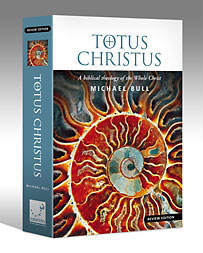 “And now, indeed, the hand of the Lord is upon you, and you shall be blind, not seeing the sun for a time.” And immediately a dark mist fell on him, and he went around seeking someone to lead him by the hand.” Acts 13:11
“And now, indeed, the hand of the Lord is upon you, and you shall be blind, not seeing the sun for a time.” And immediately a dark mist fell on him, and he went around seeking someone to lead him by the hand.” Acts 13:11
The blindness of Elymas caused Sergius Paulus to believe. The temporary blindness of a Jew brought about the conversion of a Gentile.
A repeated symbolic concept in Scripture is that of sight and blindness. Samson and King Zedekiah both lost their eyes. Isaac and Eli were blind. From Genesis 1:4, 3:6 and 6:2 we learn that eyes are organs of discernment and judgment. The process of maturity makes wise judges who are “the eyes of the Lord”, walking “to and fro on the earth”, collecting evidence to present before His court. Bible symbols are consistent, and their meanings become plain to the saints with their “new eyes.” Those who refused to obey the gospel twisted the Scriptures to their own destruction (2 Peter 3:16).
“For I do not desire, brethren, that you should be ignorant of this mystery, lest you should be wise in your own opinion, that blindness [hardness] in part has happened to Israel until the fullness of the Gentiles has come in.” Romans 11:25
…Herod and the Jews had symbolically become Egypt, hardened like Pharaoh (Romans 9:17-18; Hebrews 3:16; 8:9; 11:26-29; Jude 1:5; Revelation 11:8). The old Jerusalem was Hagar, and the New Jerusalem was Sarah. Christians, not Jews, were “the promised child.” Judaism had become childless like Naomi, and it was only the “fullness” of outsiders, Peter’s “unclean animals”—Ruth—that rescued the people of God from spiritual famine, the extinction of unbelief. The barrenness of Egypt was replaced with the harvest of Pentecost.
…Agabus the prophet foretold a famine in Judea (the curse for the shedding of Stephen’s innocent blood), but the Antioch saints sent relief (the richness of ‘Ruth’) to those in Judea.
Comments Off | tags: Acts, Isaac, Paul, Ruth, Samson, Typology, Zedekiah | posted in Biblical Theology, The Last Days, Totus Christus
Apr
10
2009
Did God replace Judaism or merely put it on hold?
Being a Jew was never a matter of bloodline, but of Covenant. Think of Abraham’s servants circumcised in Genesis 17, the Egyptians at the Exodus, Caleb the Kenizzite, Rahab, Ruth, Uriah, etc. It seems the Old Testament keeps throwing us examples of people “grafted in.” The only actual bloodline of any importance is the one we are given, the family tree from Abraham to Christ.
Israel’s captivity and Restoration gave us a perfect picture of the New Covenant events. The Temple and walls of the old Israel were ‘de-created’ and God Himself (the ark) died in Babylon for the sake of a new Jerusalem with impregnable walls.
Christ was the human ark. Judaism, intermarried with Roman political power, became Babylon.
My point is, the captivity was a death-and-resurrection of first century Israel (the resurrection as predicted in Ezekiel 37) in type. The first century was the antitype. Thus, whatever remains of Judaism today is like exhumed idols from the eras of Jeroboam, Ahab*, Omri and Manasseh.
It is not about blood. It never was. It is about Covenant, and there is only one of those. Despite its various death-and-resurrection renewals, there has only ever really been one covenant. There is no replacement of God’s people, only transfiguration from glory to glory.
*Remember it was Jezebel’s daughter Athaliah that almost DID destroy this single bloodline that mattered. Jehoash was the single son who escaped, an echo of Moses and a type of Christ.
6 comments | tags: Abraham, Ahab, Ark of the Covenant, Athaliah, Babylon, Covenant curse, Dispensationalism, Genesis, Jezebel, Joash, Replacement Theology, Resurrection, Ruth | posted in Biblical Theology
































